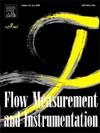Comparative study of the pore volume percentages of the carbonate core plug samples using direct, 2D techniques and exploratory data analysis
IF 2.3
3区 工程技术
Q2 ENGINEERING, MECHANICAL
引用次数: 0
Abstract
Porosity measurement is essential in understanding fluid flow through rock formations via different methods such as porosimeter, Scanning Electron Microscopy (SEM) images, ImageJ and Digimizer software. This study aims to compare these methods in terms of accuracy, both on a sample-by-sample basis and overall performance, while also taking into account cost and availability. In order to achieve this goal 25 core plug samples were analyzed using a helium porosimeter and compared with measurements obtained from 25 thin sections images using ImageJ and Digimizer software and 25 SEM images. The results indicate that, in terms of sample-by-sample accuracy, SEM is the closest alternative to the porosimeter; however, is more expensive and less accessible. Overall, Digimizer offers a strong balance of accuracy, cost, and availability, making it a preferable alternative for most applications. ImageJ, though slightly less accurate, stands out as the most cost-effective and widely available method; however, it is suitable primarily for preliminary assessments.
求助全文
约1分钟内获得全文
求助全文
来源期刊

Flow Measurement and Instrumentation
工程技术-工程:机械
CiteScore
4.30
自引率
13.60%
发文量
123
审稿时长
6 months
期刊介绍:
Flow Measurement and Instrumentation is dedicated to disseminating the latest research results on all aspects of flow measurement, in both closed conduits and open channels. The design of flow measurement systems involves a wide variety of multidisciplinary activities including modelling the flow sensor, the fluid flow and the sensor/fluid interactions through the use of computation techniques; the development of advanced transducer systems and their associated signal processing and the laboratory and field assessment of the overall system under ideal and disturbed conditions.
FMI is the essential forum for critical information exchange, and contributions are particularly encouraged in the following areas of interest:
Modelling: the application of mathematical and computational modelling to the interaction of fluid dynamics with flowmeters, including flowmeter behaviour, improved flowmeter design and installation problems. Application of CAD/CAE techniques to flowmeter modelling are eligible.
Design and development: the detailed design of the flowmeter head and/or signal processing aspects of novel flowmeters. Emphasis is given to papers identifying new sensor configurations, multisensor flow measurement systems, non-intrusive flow metering techniques and the application of microelectronic techniques in smart or intelligent systems.
Calibration techniques: including descriptions of new or existing calibration facilities and techniques, calibration data from different flowmeter types, and calibration intercomparison data from different laboratories.
Installation effect data: dealing with the effects of non-ideal flow conditions on flowmeters. Papers combining a theoretical understanding of flowmeter behaviour with experimental work are particularly welcome.
 求助内容:
求助内容: 应助结果提醒方式:
应助结果提醒方式:


